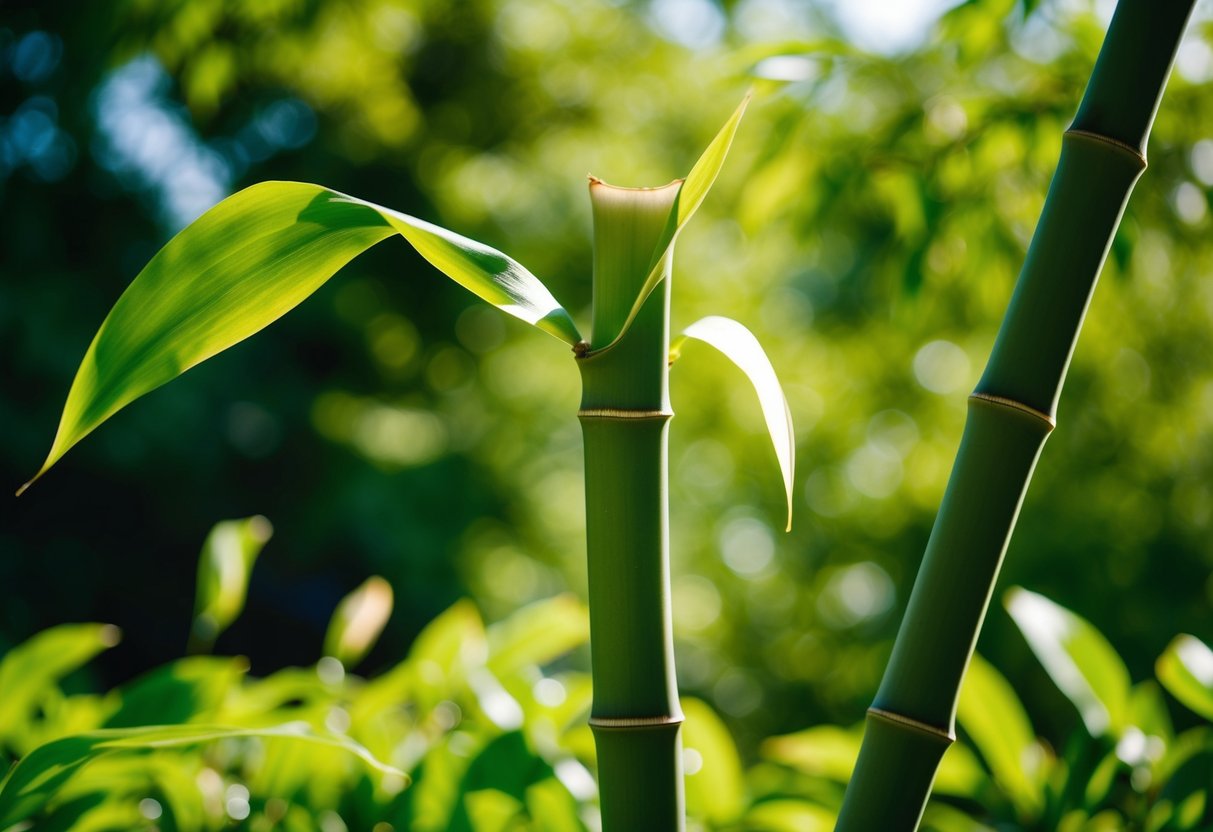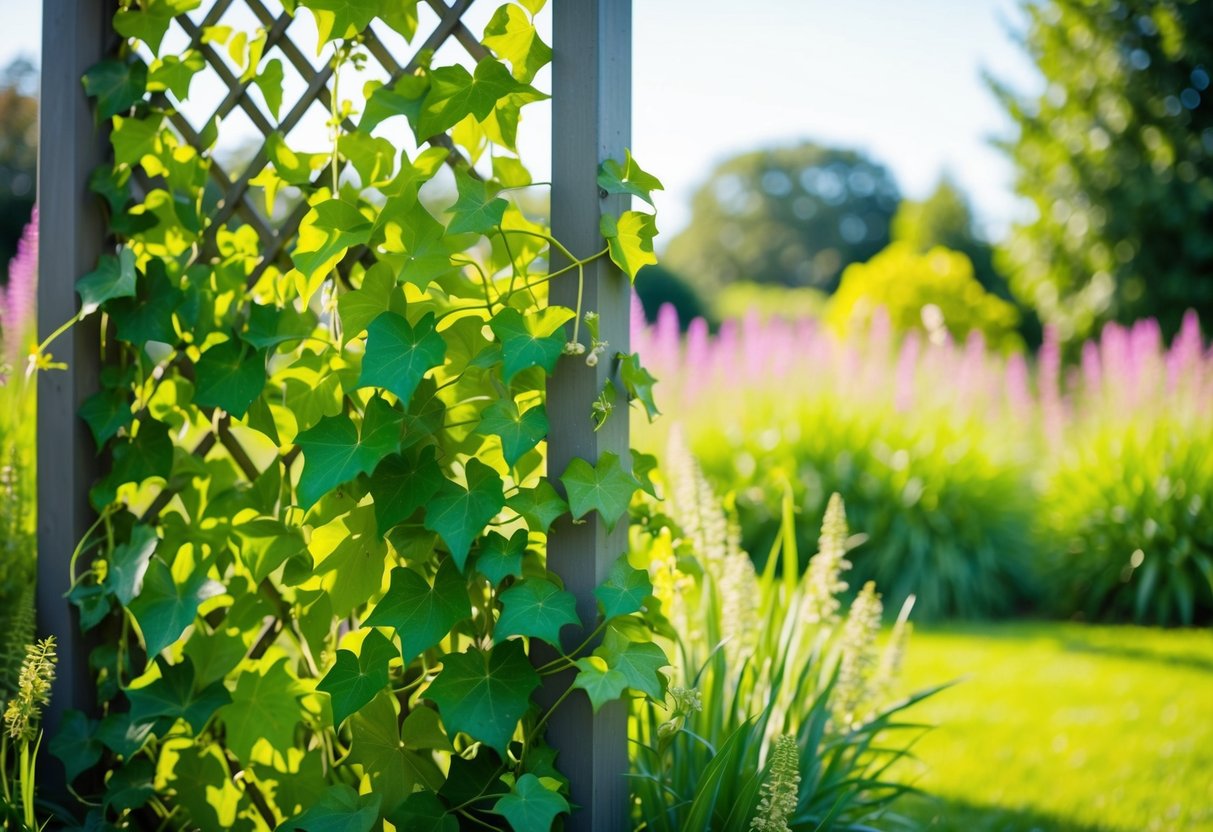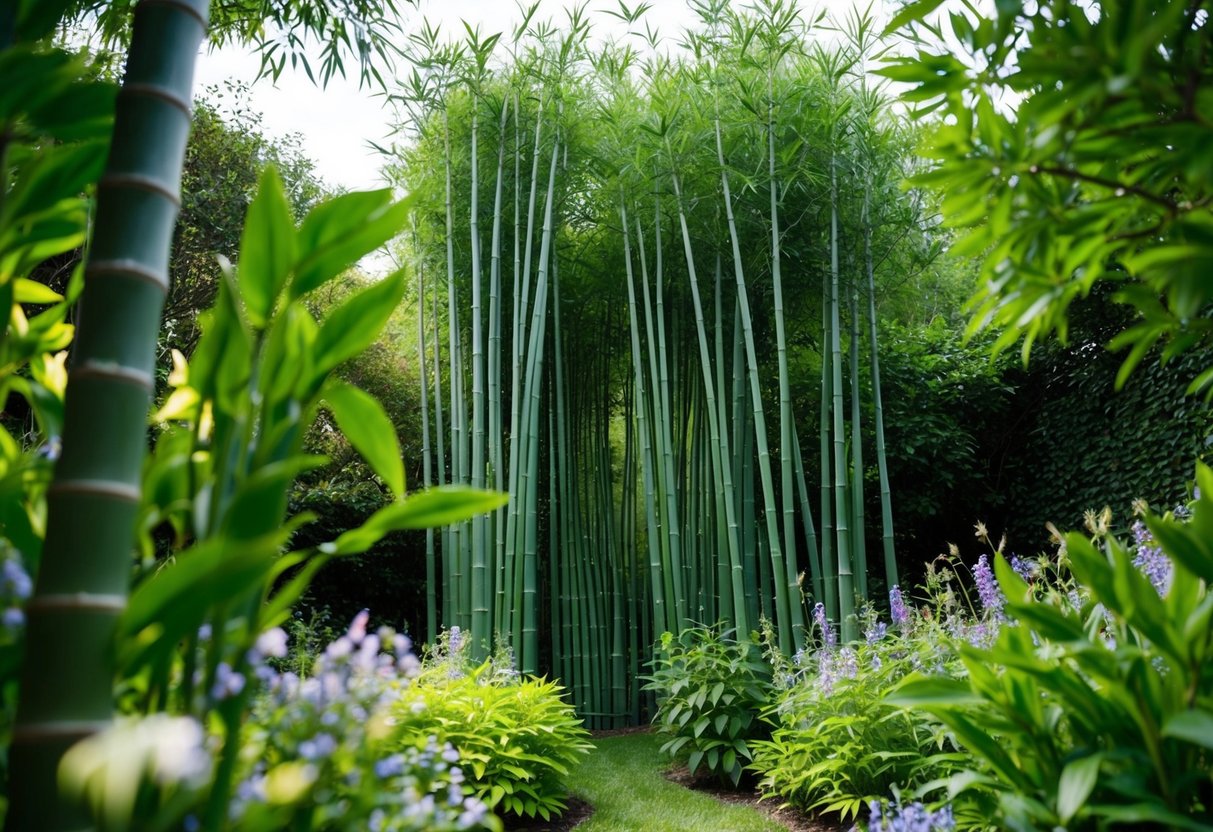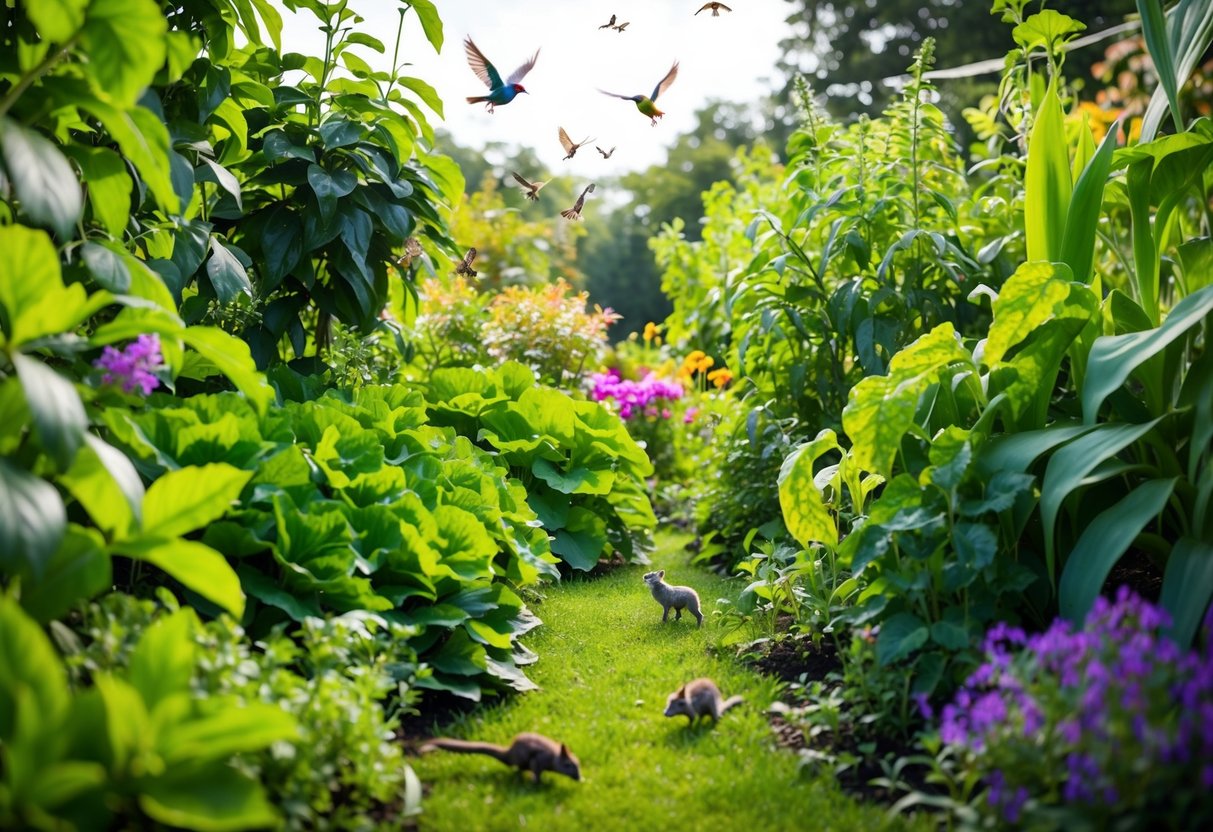What is the Fastest Growing Plant in the UK? Discover Nature’s Speedster!
When it comes to finding the fastest growing plant in the UK, you have some fascinating choices. If you’re eager to fill your garden with greenery quickly, certain plants stand out for their rapid growth. One of the top contenders is the Common Elder, which can grow between 0.4 and 0.6 meters a year, reaching heights of up to 8 meters. Another speedy grower is the Griselinia, adding up to 24 inches of new growth annually and reaching a height of up to 15 feet.

You might also consider the Thuja or Western Red Cedar, which is perfect if you want quick privacy. With growth rates of up to 60 cm a year, they can form a dense barrier for your garden. This makes them popular choices for hedging and visual screening.
When planning your garden, choosing plants like these that grow quickly can transform your space in no time. Whether you aim for privacy or lushness, these fast-growing plants can help you achieve a vibrant garden more swiftly.
Overview of Fast-Growing Plants in the UK

Fast-growing plants are a fantastic choice for your garden when you want quick coverage or lush greenery. These plants can help mask unsightly areas and provide a habitat for wildlife. They come in various forms, such as trees, shrubs, and climbers, each with unique benefits.
Understanding Growth Rates
When choosing fast-growing plants, paying attention to their growth rates is important. Growth rates tell you how quickly a plant can transform your garden. For example, Common Elder, a fast-growing shrub, can reach several meters in height if not pruned. Fast-growing trees like willows can also offer quick vertical coverage and shade. Knowing these rates can help you plan your garden design effectively.
Plants like Jasmine and Creeping Blue Blossom offer fast growth combined with beautiful flowers. Jasmine is especially popular for its fragrance and quick coverage on trellises. Meanwhile, Russian Vine, known as Mile-a-minute, is recognized for its rapid growth, making it ideal for covering large areas quickly. Understanding these specifics will guide you in selecting the right plants for your needs.
Benefits of Fast-Growing Plants
Fast-growing plants bring several advantages to your garden. They rapidly fill empty spaces, making them a great choice for new gardens. Shrubs like Common Elder can be pruned to form attractive hedges, adding structure to your garden.
These plants also benefit wildlife by providing habitats and food sources. Fast-growing climbers and shrubs offer shelter to birds and insects, making your garden more biodiverse. Moreover, these plants are versatile in garden design, from a formal landscape to a wildlife garden, they bring both beauty and practicality.
Selecting fast-growing varieties allows you to enjoy these benefits sooner, creating a lush garden environment that flourishes in no time.
Popular Fast-Growing Trees and Shrubs

When you’re planning your garden, choosing fast-growing trees and shrubs can help you create the landscape you want more quickly. Both types can provide shade, privacy, and aesthetic appeal in a short time.
Top Fast-Growing Trees
If you want a tree that grows quickly, consider the Lombardy Poplar. This tree is known for its tall, narrow shape and grows about 3 to 5 feet per year. It’s great for creating privacy screens.
The Silver Birch is another option. It has a graceful appearance with its white bark and grows about 2 feet annually. It’s a favorite in the UK for its delicate branches and yellow autumn leaves.
Willow trees are particularly fast-growing. A favorite is the Weeping Willow, which can grow up to 8 feet a year in the right conditions. Its cascading branches create a serene look by ponds or rivers.
Leylandii is an evergreen that can be shaped into beautiful hedges. It grows fast, almost 3 feet annually, and provides excellent privacy with its dense foliage.
Fast-Growing Shrubs for Impact
For shrubs, Cherry Laurel is an excellent choice. It’s known for its glossy leaves and can grow swiftly to form tall, thick hedges. This makes it perfect for creating a private space in your garden.
The Loropetalum, also known as the Chinese fringe flower, not only grows quickly but also blooms in beautiful shades of pink or white. It adds a colorful touch to any garden.
Bamboo is another fast-growing option that can add a tropical feel to your yard. Some species can grow a few feet per year, creating a lush and exotic atmosphere.
Consider the Common Beech for a more traditional look. It forms a tight hedge and grows rapidly, with stunning autumn colors.
Garden Privacy Solutions

Enhancing your garden’s privacy can be achieved using fast-growing plants and clever designs. Whether you choose trees, shrubs, or natural screens, these solutions can offer year-round privacy for your outdoor space.
Trees and Shrubs for Privacy
Choosing the right trees and shrubs is key to building a natural privacy screen. Fast-growing evergreen shrubs like the Photinia can add a vivid touch with their red-tipped leaves. Evergreen shrubs like these are great because they provide coverage throughout the year.
Laurels are another excellent choice. Both Portuguese laurel and regular laurel provide dense foliage, perfect for hiding your garden from prying eyes. If you prefer a taller option, the common beech tree is a fantastic choice, reaching impressive heights and providing elegant greenery. Cherry laurel and hazel can also fill space quickly and provide coverage.
Creating Natural Screens
Natural screens not only offer privacy but can add charm and beauty to your garden. You can use hedges to create a living wall for privacy. Options like the Western Red Cedar are popular for this purpose, as they grow quickly and form dense barriers.
A privacy hedge offers a mix of function and style. Fast-growing hedges, such as hawthorn, can sprout up to cover views swiftly. For a unique twist, you might plant a hazel hedge which not only creates a screen but can also produce nuts for you to enjoy.
Caring for Fast-Growing Species

Taking care of fast-growing plants involves understanding their specific needs. You’ll want to know about soil and water requirements and how to maintain their rapid growth through proper pruning.
Soil and Water Requirements
The soil type is crucial for fast-growing plants. Loamy soil is often ideal because it retains moisture while allowing excess water to drain—perfect for plants that grow quickly. You might find mycorrhizal fungi beneficial, as they help roots absorb nutrients more efficiently.
Watering is just as important. Fast-growing plants often need more water, especially during dry spells. An inch of water a week is a good rule of thumb, but the amount can vary depending on your local climate. Be sure to check the soil moisture to keep plants thriving.
Pruning and Maintenance Tips
Pruning helps control the size and shape of fast-growing plants, making it essential for garden privacy. For shrubs like the ‘Green Giant’ arborvitae, trim them regularly to maintain a neat shape.
Focus on removing dead or overcrowded branches. Use sharp pruning shears to make clean cuts, which heal faster. Some plants benefit from pruning during their dormant season, so find out the best time for each plant type. Regular maintenance encourages healthy growth and keeps your garden looking its best.
Attracting Wildlife with Fast-Growing Plants

Fast-growing plants can do wonders for your garden, especially when they also attract wildlife. Adding certain shrubs and trees can provide habitats and food for birds, insects, and other creatures, making your garden a lively place.
Flora for a Wildlife-Friendly Garden
In the UK, incorporating native trees and shrubs helps attract local wildlife. Plants like hazel, willow, and osier are great because they grow quickly and support a variety of species. Dogwood is another good choice as it provides food for birds and cover for small mammals.
Alder thrives in wet areas and is perfect for supporting butterflies and bees. Shrubs such as mock orange and lilac provide nectar for pollinators. They also have fragrant blooms, adding beauty to your garden.
Buddleja, also known as butterfly bush, is famous for attracting butterflies. Photinia, pyracantha, and escallonia offer berries, which are essential for birds during colder months. Remember, diversity in plant selection means more wildlife variety in your garden.







